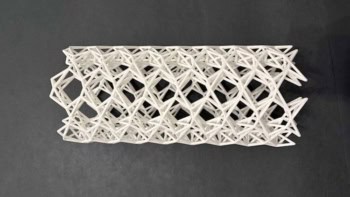
Swirling magnetic patterns of spins dubbed “target skyrmions” have been created without the application of an external magnetic field. The skyrmions appeared on small discs of a magnetic alloy and could be used to store information in terms of the rotation direction of the swirls.
Originally conceived as particle-like regions within a field where all field vectors point either towards or away from a single point in space, skyrmions were proposed in the 1950s by British physicist Tony Skyrme to explain aspects of particle physics. Since then, certain collective excitations of electron spins in solids have been shown to behave much like skyrmions. These solid-state magnetic skyrmions could be potentially useful in next-generation electronics and spintronics.
Chiral magnet
In this latest work, Jiadong Zang at the University of New Hampshire, Haifeng Du of China’s High Magnetic Field Laboratory and colleagues in Germany, China and the US studied skyrmions in a tiny disc of iron-germanium. This material is a chiral magnet that has a skyrmion unit cell – each unit cell being a circular magnetic structure of electron spins with a diameter of about 80 nm.
Their disc has a diameter of about 160 nm and is 90 nm thick. Using an electron microscopy technique called off-axis electron holography, the team showed that the centre of the disc is occupied by a conventional skyrmion with a diameter of about 85 nm. The outer region of the disc has a ring of electron spins that create a magnetic field that is opposite in direction to that generated by the skyrmion.
Two configurations
Writing in Physical Review Letters, the team describes the overall spin structure of the disc as a target skyrmion. They found that the structure has two ground-state configurations – one in which the magnetization of the inner skyrmion rotates clockwise and the other in which the rotation is anticlockwise. These states are stabilized, believes the team, by the magnetic field generated by the outer ring of electron spins. Furthermore, the rotational sense of the inner skyrmion can be switched between the clockwise and anticlockwise states by applying a magnetic field of about 200 mT.
The ability to flip the rotational sense of the skyrmion between two stable states means that the discs could be used to store digital bits of information and could even be linked together to create logic gates and other devices.



